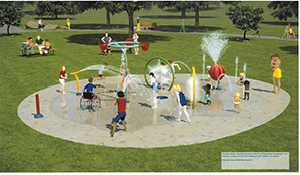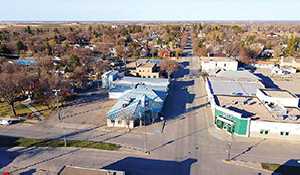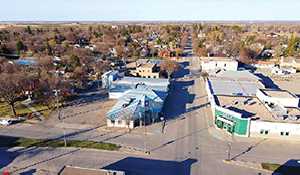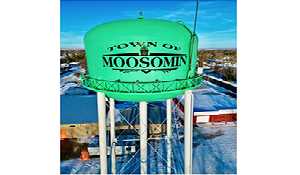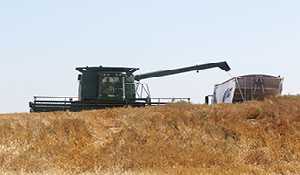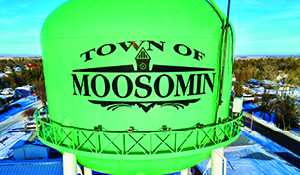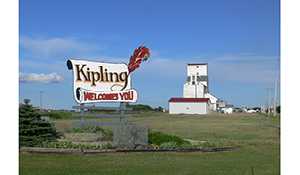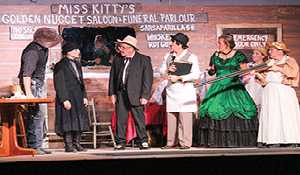Farmland Values Report: Saskatchewan farmland increases by 28.5 per cent
April 23, 2014, 1:53 am
Khang Nguyen


The average price of farmland in Saskatchewan has increased 28.5 percent, the highest in the country according to the 2013 Farmland Values Report put out by Farm Credit Canada (FCC).
Since 2011, Saskatchewan has seen a steady increase in farmland value with a 22.9 per cent increase in 2011, and a 19.7 per cent increase in 2012.
The 28.5 per cent increase was the highest in Canada, with Manitoba and Quebec trailing with 25.6 per cent and 24.7 per cent respectively. Canada as a whole experienced a total of 22.1 per cent change in farmland value.
According to the FCC report, much of the Saskatchewan’s farmland price spiked early in the year and carried throughout 2013.
“There was a strong grain loyalty at the beginning of the year and strong cattle prices at the end of the year. We had record yields as far as crop this past year. Saskatchewan still has reasonably low interest rates. All of this turned into a positive outlook for agriculture,” said Cathy Gale of FCC.
The report also mentions that more farmland has been bought by farmers looking to expand their operations, as well as young farmers from outside of Saskatchewan coming to the province to buy land.
The FCC report has been issued annually since 1985.
“We have benchmarked properties which are all arable land which we’ve selected. These same properties since 1985 are appraised every year to see if they are using comparable sales in the area to determine if they’ve gone up or down in value.” Gale says.
The benchmarked farmland covers all soil types in Saskatchewan and span across the entire province, says Gale.
Marcel Decorby of Re/Max specializes in selling farm land, and says that the market has been increasing over the years, but he wouldn’t have been able to predict such an increase at the beginning of the 2013.
“I certainly wouldn’t have predicted that we would have seen that, but it definitely happened,” he said.
“It was quite amazing. In the spring it was really strong, but by the end of the year we saw the strongest markup we’ve ever seen.”
DeCorby says that in addition to the FCC reports, changes to Saskatchewan farming laws over the years have increased the market for Saskatchewan farmland.
“At one time, there was a law in Saskatchewan where you had to be a Saskatchewan citizen to buy land. That has opened up to allow any Canadian to own land in Saskatchewan. It took some time to catch on, but there is a lot of money that is put into buying land because people think it’s a safe investment.”
To own land in Saskatchewan, buyers must be Canadian citizens, permanent residents, or be a 100 per cent Canadian-owned company. Over the years, these rules have experienced some exemptions, and because of that, more and more farmland is being bought.
DeCorby says that many international investors and farmers are coming to Saskatchewan to purchase the land.
“They’re coming to farm the land. The big change we’ve seen in the last year is that they are willing to take less of a return on their investments. They just want to own the land in Saskatchewan. At one point they wanted a five per cent return on their land, but now they are willing to take a 2.5 per cent return on their investment.” Decorby says.
“There are going to be different people farming land in Saskatchewan in the future. It’s going to be big farms and some of it is going to be owned by people who would not be your typical Saskatchewan farmer. There are more people investing in land. The investment market is slow, but the farmers are picking up the slack. They’re paying what investors paid for last fall.”
While price of farmland in Saskatchewan has increased 28.5 per cent, it still remains the lowest farm land in Canada, and one of the cheapest in the world, says DeCorby.
“There are places in Manitoba that are selling for $6,000 per acre. Saskatchewan tops out at about $2,500 per acre.”
“There were lots of people who knew Saskatchewan had cheap farms, but they weren’t living in the province of Saskatchewan so they couldn’t buy land. They were actually waiting for the border to open up. It’s still the cheapest land in Canada and some of the cheapest in the world.”
Saskatchewan’s farmland has historically always been cheaper than the rest of the country, says Gale.
“Our population is lower so we don’t have as much urban influence as other provinces might have. Our growing season is shorter than a lot of other provinces, and there’s only certain things you can grow here opposed to places like British Columbia and Ontario,” she says.
“It’s because the population of Saskatchewan and because the outside investment wasn’t allowed in Saskatchewan for a lot of years.” DeCorby says.
“We’ve got land as good as Alberta and Manitoba. There is some land in Manitoba that has more depth of top soil but by and large, Saskatchewan has more arable land than Manitoba and Alberta,” he added.
DeCorby says that we may not have seen the end of the increase yet, but expects it to level off in the future.
“As long as commodity prices are high, farmers are going to still buy farmland. We’re going to continue to see bigger farms. That’s one of the biggest changes. Farms are going to continue to grow because smaller farmers can’t afford to buy land at the price that it’s at now.” DeCorby says. “In my opinion, we’re going to see a little bit of levelling off, but as long as our commodity prices don’t go in the toilet, and there is still a profit, land prices will continue to rise a little.”
According to Gale, FCC agriculture economist suggests that the grain backlog will have an impact on the farmland price for 2014.
“There was a shortage of grain in the past, and now it’s probably going to start increasing what is available. The expectation is that the actual demand for land will soften somewhat. Going forward it’s hard to know what the price will do, but it’s expected to stabilize instead of going up as much as it has, but that’s just a guess at this point.”
“It all depends on what is influencing it. It’s not always just the grain prices, it also is the oil and gas sector, that impacts it a lot . . . depending on what’s happening with anything else like minerals and those sorts of things, that can change things as well.” Gail said.








